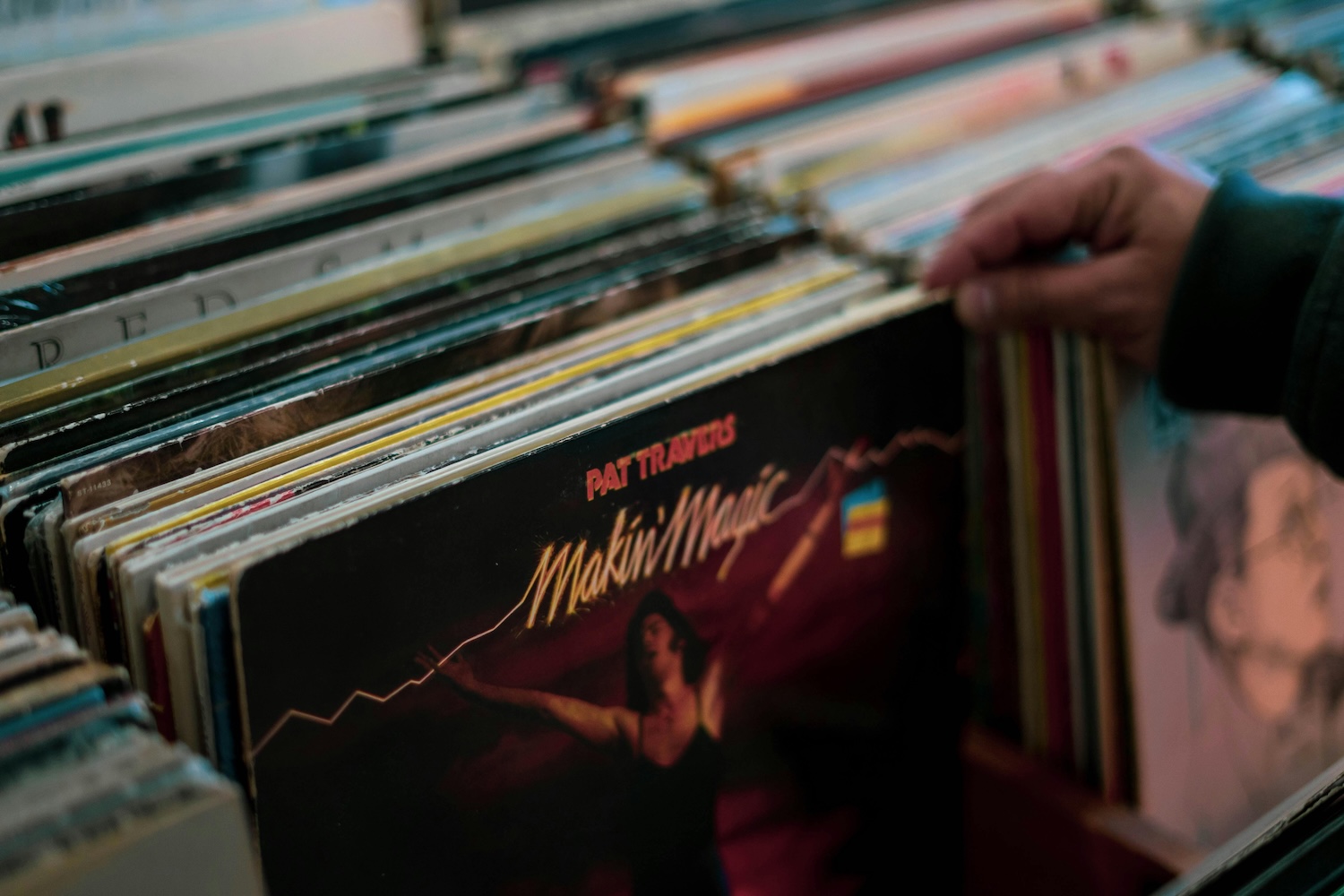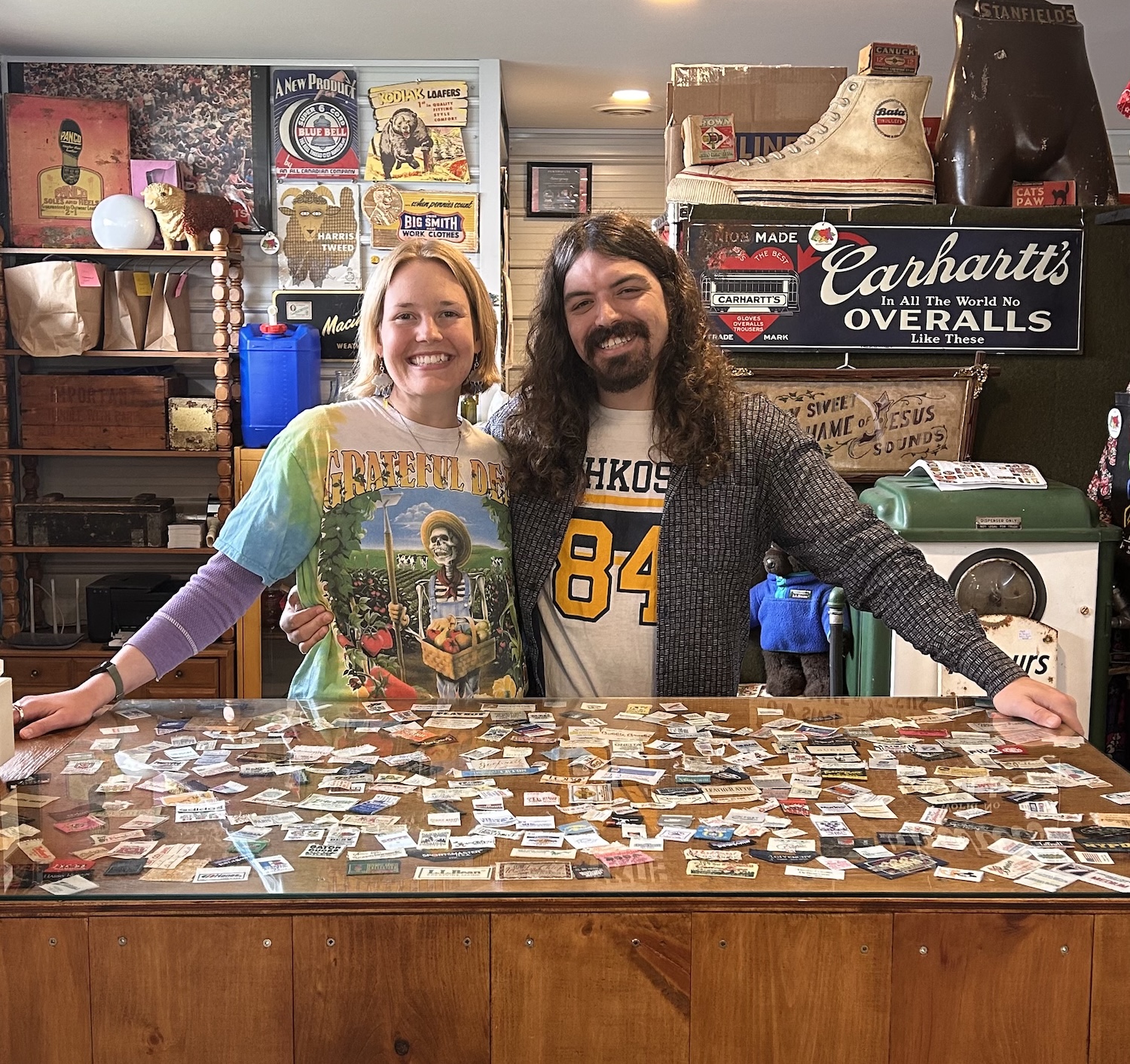Repairing vintage handbags: Q&A with Colleen O’Reilly, owner of The Grey Spa
Your go-to guide on what to fix when sourcing vintage handbags, and how to care for them
Vintage handbags have stood the test of time—but how can buyers repair and care for these precious relics to last many more years?
Enter The Grey Spa, an independent handbag restoration company based in Calgary, Alta. Sole proprietor Colleen O’Reilly has made it her mission to extend the life of vintage and contemporary handbags to help support a more circular economy.
Resellers and consignors are among the clients who turn to The Grey Spa to fix vintage bags before sale, whether it’s to make major repairs or for “smaller things that help with photographing the bag—like corner touch ups, which can give [sellers] a few more points on their condition scale,” explains Colleen, who is also an authentication and appraisal consultant for small auction houses and luxury consignment stores.
Entirely self-taught on handbag restoration, Colleen has been sewing for two decades, having learned the craft from her mother and grandmother.
Five years ago, she purchased an industrial sewing machine to work with heavier fabrics, including leather, and started researching new stitching and dyeing techniques.

As her workmanship improved, Colleen joined online forums and groups for handbag restoration specialists and cobblers, where, at 33 years old, she’s among the youngest members. She’s also one of few women involved in what has been traditionally a male-dominated trade.
“There aren’t too many repair places that specialize in handbags. I would say there are about five in North America, and most of them are generational, the same way cobblers are,” Colleen says.
“It’s definitely kind of an old-school world, but they’ve also been very welcoming in so many ways, and provided really valuable critiques, information and tricks.”

Colleen primarily works with leather, coated canvas and other natural materials, and specializes in luxury handbag repair for brands including Louis Vuitton and Chanel. She also maintains an inventory of era-specific hardware and thread to ensure a perfect match.
Luxury brands offer their own after-care services that can be cost-prohibitive and require owners to part with their bags for months, which drove Colleen to perfect her craft as a way to provide alternative options in the repair market.
Working with high-end labels ups the stakes: “You only get one shot on the bag,” she explains. “Leather is not like sewing fabric where you can pick your stitches out. It's one and done.”
Here, Colleen chats to The Vintage Seeker about The Grey Spa’s suite of services, how to know what’s worth fixing when sourcing vintage handbags, and how to care for your handbags once you own them.
What are some of the things you can do to repair a handbag at The Grey Spa?
Colleen O'Reilly: The most common thing I work on is edge coat. It's that rubberized coating on the edge of straps—and it is just not a permanent thing. It will crack; it doesn't matter if it's Hermès or from the mall.
That took me a long time to actually figure out how to get the factory-finish look to it. Another common thing is corner touch-ups, where the pigment wears away on the bag. I colour-match it, and then replace the colour so it looks freshened up that way.
Otherwise, I do pretty much everything, from creating straps—I found leather that matches the vachetta Louis Vuitton uses, so I can create replacement pieces—to sourcing specific hardware.
If something goes missing off your bag, I can generally find something pretty close. If it's not exact, then I find enough pieces to replace everything on the bag so that it looks consistent. I can fix missing stitching, replace zippers, do interior fixes, and custom-make interior organizers for your bag.
Are there any pieces you won’t take on?
COR: I'll work on pretty much any brand. I try to stick to authentic pieces. It's just not worth the cost versus what I have to charge if it were something non-authentic.
That's where fast fashion and some middle-ground brands lie—if the cost of the item was $100 but for me to touch up the corners and redo the edge coat is going to be $150, many people wouldn't find that it would be worth the while.
I also deal with vintage stuff, and sentimental pieces that may not have intrinsic or monetary value. I try to work with pricing, too. The whole point of the business is to keep the bags in use.

What sets apart higher-end bags from brands like Louis Vuitton and Chanel, in terms of how they are made? What should buyers look for in vintage versions?
COR: Vintage is actually better in the case of both of those brands — for Chanel, I would say pre-2005 and for Louis Vuitton, pre-1995. For example, Louis Vuitton used to use a much thicker coated canvas.
The monogram used to be so thick, and really, really durable. They were also using solid brass hardware at that time, so you don't get the flaking that comes with plated hardware.
Chanel used to do 22- and 24-karat gold plating on their hardware pre-2008. I find the quality of the lambskin that they were using was a little thicker, a little bit more durable. As time goes on, they change suppliers, or whatever happens.
But you’ll notice when you look at those bags, the stitching is immaculate. It's always going to match up. On Chanel, the quilting is also always perfectly matched. It's hard to appreciate how hard that is to do unless you sew, but it's very, very difficult to construct those bags so perfectly.
Like when you’re trying to wrap a gift and the pattern won't line up?
COR: Yes! I've never seen inside their factories, but they have templates and jigs and specialty pieces for every step of the process to make sure that 100 per cent of the time, the quality control is there. It's what people look for.
There are serial numbers, but really, when you're authenticating a bag, stitching is one of the number one things. And the quality of materials used. You can just feel the weight.
Continued below
Fresh advice about old stuff
Download our free tip sheets
Continued from above
Is there anything that you especially need to pay attention to when you're repairing a high-end brand?
COR: If I'm working on a Louis Vuitton, my work has to be perfect to match their quality. But they also design things in a way that they're meant to be repaired.
For example, with the Neverfull classic tote bag, the handles are stitched through the lining, which means that they've thought about the fact that those handles are going to wear out, and that they can easily stitch new ones on and replace them.
Whereas with fast fashion, they're not thinking about repairs. In some cases, it's actually more difficult to repair a fast-fashion item, because there isn't that consideration of the way an item is constructed or the materials used.
For example, if it's a vegan leather or a vinyl, once it rips, there's not a lot that can be done. And it's hard to find replacement material that's going to look the same.
Sometimes, working on lower-quality bags is actually more difficult to do, just based on the fact that they're just not designing with longevity in mind. They're not thinking about putting on a strap so that it can be fixed later on.

When you’re restoring a vintage bag, what do you need to be the most careful about?
COR: They can be more fragile. We're also in a dry climate here, so cracking leather is an issue, and also the flexibility of the leather or the material as it ages—it can stiffen up.
I might not be able to pop the bag inside out to repair it, even though that's the way the bag was made initially. I have to be more careful with the way I’m manipulating it.
And obviously, I cannot find replacements. If I crack the bag in half while repairing it, it’s kind of a done deal! So I just use extra caution when I'm working on vintage pieces, just knowing that they're more fragile and things are breaking down.
The inner linings, and the stays—which give structure to a bag—those can break down over time. To replace the stays, you’d have to pull the entire lining and the entire bag apart. It can be done, but it’s very cost-prohibitive depending on the item.
What people should be looking for when they’re shopping for a vintage bag in terms of quality and construction? What can be fixed and what definitely can’t be fixed?
COR: One thing that cannot be fixed is cracked leather. If a bag has water spots or stains, you can usually darken it to disguise those, that sort of thing, it may be able to be cleaned and conditioned to renew it.
But once leather is cracking, it's pretty much game over. If it's a strap, it could be replaced. But if the body of a bag is cracked, that's kind of the end of its life, unfortunately. Everything else can pretty much be repaired. Hardware can be re-plated. Loss of colour can be fixed.

If you're looking for quality, the lining is often a good indicator of that. If you see silks and satins in there, and really nice zippers and hardware, it usually tells you that if they spent that much time on those little details, that the quality of the leather on the outside is going to be really good as well.
And look for clean stitching. Hand stitching will have small inconsistencies not found with machine stitching, but that can sometimes be a sign of higher quality. Just look at the details, the same as you do for clothing.
Once someone has purchased a vintage bag, how can they take care of it to maximize its life?
COR: Regular bag maintenance! You want to store your bag lightly stuffed with something soft, or you can use the air mailers that you get with Amazon packages, just to keep the structure.
Then you want to store it in some kind of a dust bag. A clean pillowcase works just fine. You don't want to store it inside of a box or plastic. You want there to be airflow around it. Most people also store them up top in their closet, which is the hottest spot in the room.
To clean, just use a damp cloth to dust it off. You can condition it—there are a million products out there. One that’s safe for 95 per cent of bags is called Bickmore Bic 4, which is used in horse equestrian tack. That's what I use on most items and just give it a little moisture.
And also don't carry pens or water bottles in your purse! I’ve seen some disasters. Use a pencil case.
Think of leather like your skin. Keep it out of the sunlight. Keep it out of the heat. Keep it moisturized.
The mentality these days generally seems to be when something breaks, we get rid of it. What do you think about that?
COR: I think we have a huge problem. We're sending so many clothes to landfill. One, we're overproducing, so those [items] are headed right there from the start. We buy too much; we don't wear it enough.
I'm such an advocate for buying things secondhand. And obviously I advocate for people to do repairs or even learn simple things themselves—not just with bags, but with clothing.
If you buy things that you really, really like, why would you not want to keep them around for longer? It speaks to developing thoughtfulness when shopping, but also developing personal style instead of following trends.
I have pieces that I absolutely love where maybe the elbow has gone on a shirt, but I just keep repairing things for eternity, if I can. My grandma grew up in the Great Depression, when you were not going to be throwing away anything. It became a dish towel or a rag or something down the line.

Slowly, people are becoming more aware of sustainability and repairing what you own.
COR: People are more thoughtful about where things are coming from in the first place. Leather is an extremely resource-heavy material. So once we've already gone through the polluting process of creating the leather bag, the goal would be to keep that in use for as long as possible.
That’s also where buying classic versus trendy styles comes in. Because there's no reason why a leather bag can't last 50 years.
How does repairing items fit into the circular economy?
COR: The end goal of a circular economy is that we're designing things that can easily be reused. Unfortunately, we're not there yet. So we need to repair what's already in circulation, and keep it. Buying secondhand is an important part of that.
Repairing and caring for your items is a part of that. And making sure things are disposed of or recycled at the end of their lifetime is part of that while we figure out the perfect system for circularity.
If a bag can't be a bag any longer, I don't think that means it's destined for the landfill either. I have upcycled things into keychains, little charms, little wallets. You can sometimes make a smaller bag out of a bigger bag.
I'm always willing to work with people to find a creative solution for their item.
Colleen O’Reilly, Owner & Founder, The Grey Spa
Calgary, AB
This interview has been condensed.
Thank you for valuing our work!
Support our work to see this page.
You’ve got a good eye, but this gem is only available for members. Register for a plan or upgrade your current one to peek behind this vintage curtain, or log in below.
















